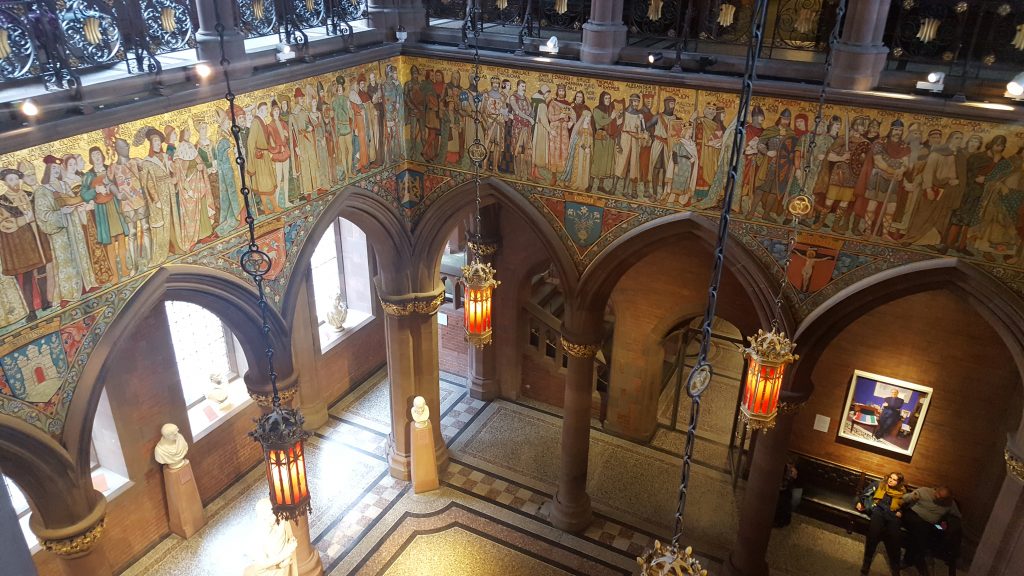Another field report.
We have been to the National Museum of Scotland before for one of our first term modules but I was looking forward to going back as I thoroughly enjoyed the exhibits.
This time we were to talk to the head of the learning team about the trials and tribulations of running a large team dealing with hundreds of thousands of visitors a year. However, somewhat irritatingly, we only had about 20 minutes to talk to the chap in charge and some of that was used for generic introduction to the museum and the kind of exhibits they had (which we didn’t need as we had already been there the previous term). I was disappointed that we had such a short time as we’d all come a long way and those of us staying the previous night had spent quite a lot of money to attend this field trip and we didn’t feel like we really got anything of value from talking to the learning officer. We didn’t even get see the learning suite or any of the materials they use for teaching visitors.
Anyway, we were then asked to go through the museum and look at various things in an educational context. One of the things that we noticed was that there was a very definite difference between the text panels for areas such as the natural history/stuffed animal section, and the geology area next to it. The geological specimens had very dense scientific text panels as you might expect, and which were placed at a high designed for young adults upwards. I very much doubt that a small child will get anything from this particular sector but there were lots of other things for small children to do.
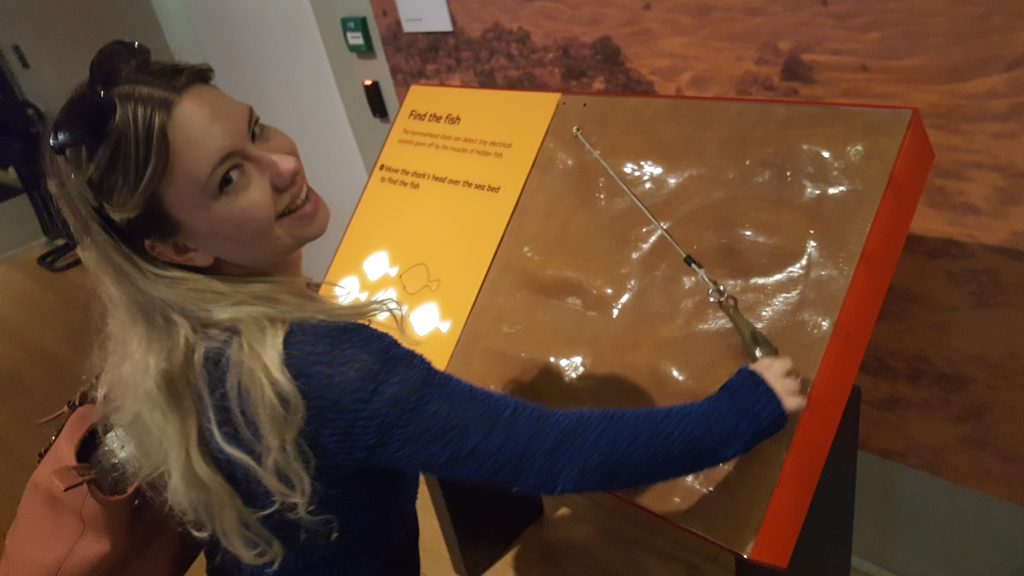
One of the sections on the ground floor was heaven for small children as it contained lots of things to play with, touch, listen to, or make noise with. We had a play with the various exhibits on offer and agreed that small children would take a lot of enjoyment from interacting with them and hopefully retain some knowledge of what the exhibits were and where they came from. Outside of this section there was “magic carpet ride” where storytelling was done on signup basis. While we were there a session started and was well attended by 10 to 15 babies and their carers, and although I did not stay for the whole session, there were lots of singalongs and simple objects.
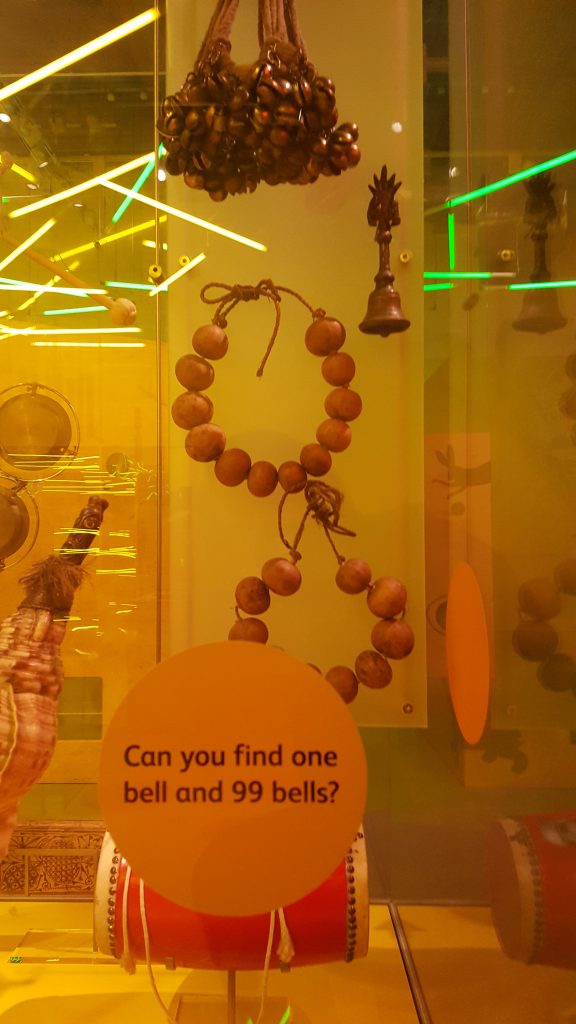
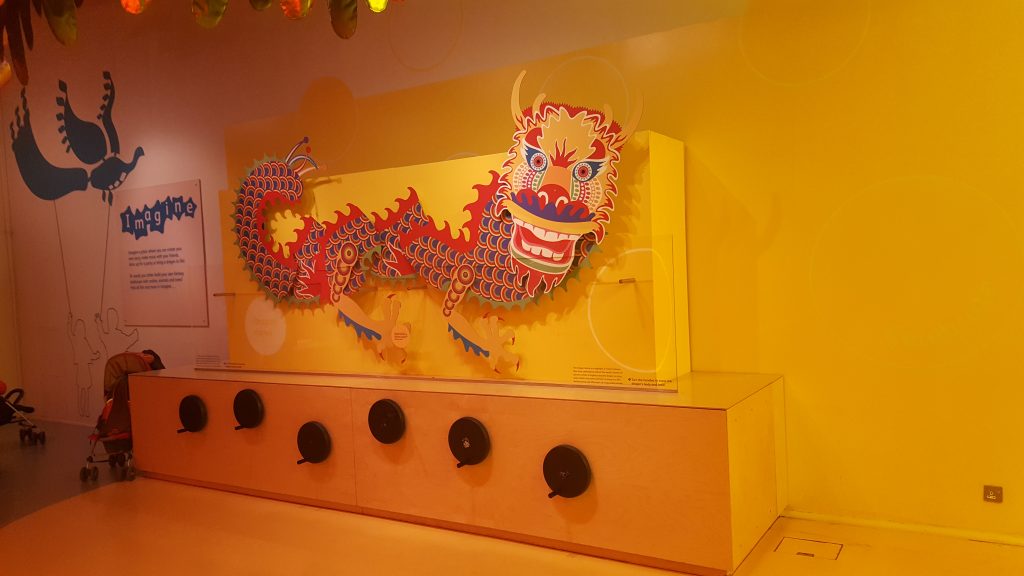
On the top floor there was a room with a giant fibreglass tree and lots of nature themed exhibits covering typical British wildlife. It was possible if you’re small enough to enter the tree and there were cutouts showing different animals in their habitats such as badgers. Lots of the stands in this area had interactive panels and games to play. This room didn’t seem as popular as the other sections which may be due to its location out of the way on the top floor.
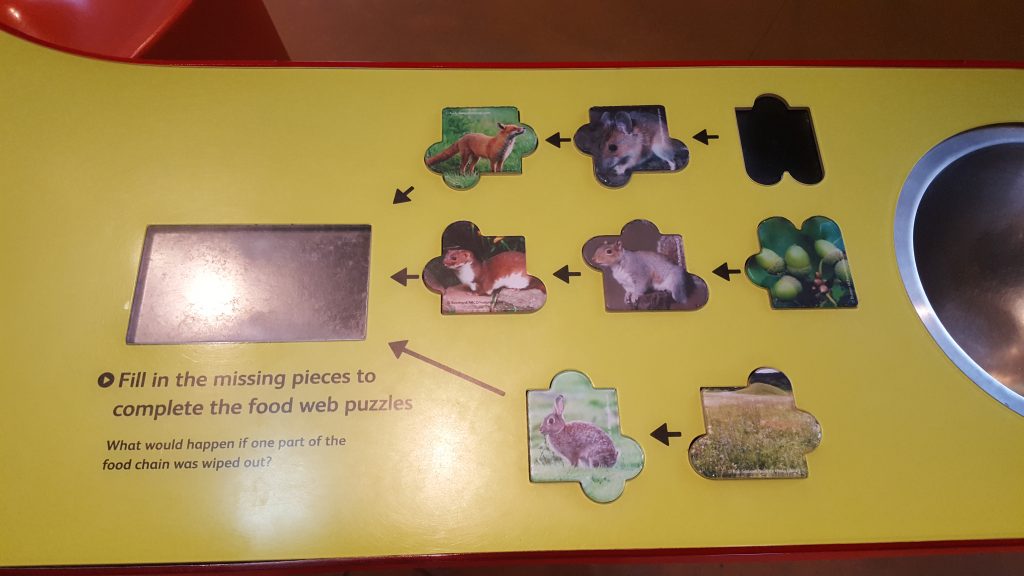
After lunch we went to the National Portrait Gallery, which I’ve never been to before as its not really my kind of thing. I’m a bit of a Philistine when it comes to art. I do like paintings but more landscape or contemporary themes; I expected that I would struggle to enjoy room after room of portraits. We met with a lovely lady who runs the education side of things and we got to see the learning suite and a lot of the material that she uses during sessions. It was very professional and there had clearly been some money spent on the room. Bonus points to the National portrait Gallery for providing tea and coffee and loads of biscuits for us. There was a very definite distinction between the hospitality and time set aside for us at the National Portrait Gallery compared with the National Museum of Scotland.
The main theme that came across from this session was that the education team here try very hard to encourage people of all ages to think beyond the painting as a flat two-dimensional representation. We were encouraged to find a painting that we liked and to then position ourselves in the same stance as the subject (within reason). The aim of this was to fully engage us with our chosen portrait and we were also asked to use our other senses; for example, if the subject was painted standing in a forest we were to imagine what the tree smelled like and the sound of the wind in the leaves. Visitor engagement is very important to the team.
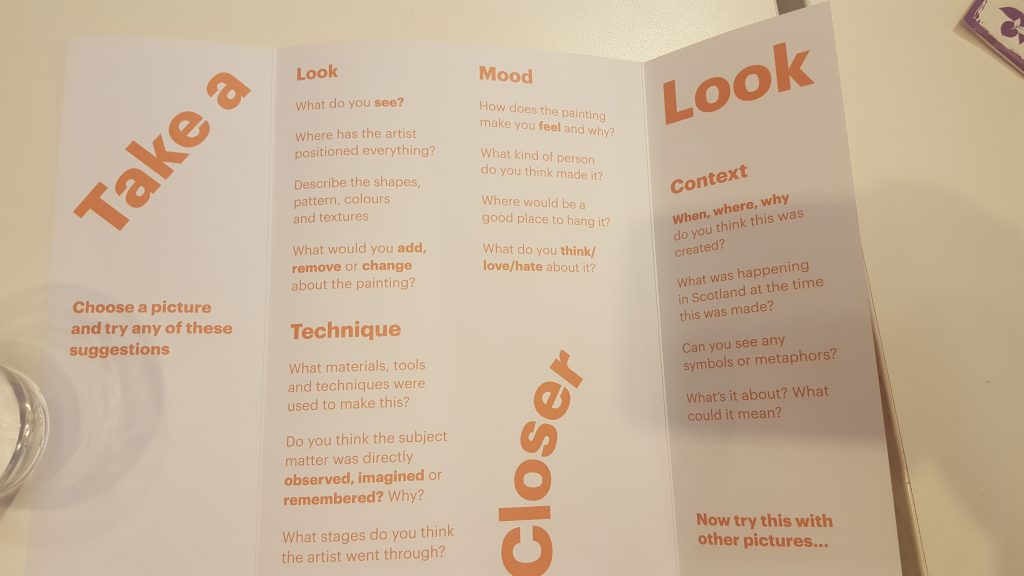
I was surprised that the team here are so keen on events for smaller children given that the subject matter of the majority of the museum probably wouldn’t interest children at all. There are sessions run by the NPG where children can make their own portraits from various craft materials. One of the exhibitions upstairs was a photographic journey through working-class local childhood but interestingly there was absolutely nothing for children in this exhibit. I can understand why this might be as the presentation of the material was quite unflinching and a lot of the subject matter was pretty hardscrabble and for me, somewhat depressing.
I surprised myself by enjoying my time at the NPG and I did find interesting stories and talking points from some of the pictures. I think because I have an interest in history anyway there were parts of the gallery where I had read about a particular personage and then found myself standing in front of a portrait they had commissioned. I also learned that the preponderance of spaniels in 19th-century portraits signifies loyalty; I didn’t know that spaniels were considered especially loyal as opposed to other dogs.
It was quite a long day and I did enjoy myself overall although as mentioned the National Museum of Scotland was pretty disappointing due to the very short time we got to talk to the education officer. As a side note I particularly enjoyed going to the portrait Gallery as the building is outstanding.
